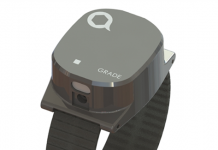The professional application of law-enforcement electronic monitoring technology as a telematic monitoring technology is closely related to the development of modern communication technology. It should be noted that law-enforcement electronic monitoring was created in the United States of America.
In 1919, Monitoring devices using radio signals were first established in the United States by the U.S. Army Signal Corps to track aircraft and ships.
In 1964, a first body-worn radio-transmitting telemetry device was developed, which weighs up to 1 kilogram and can transmit signals up to 400 meters away to a missile-like tracking device that can determine the wearer’s position on the screen. The precursor of this electronic monitoring device was Dr. Ralph Schwitzgebel, a psychologist at Harvard University, who initiated the use of this institution as a tool to control offenders. The object of his research interests, called “behavior electronics”, were changes in human behavior by the use of electronic technology in order to reinforce positive attitude and prevent another offender.

In the 1970s, Robert Schwitzgebel and Richard Bird commenced works on creating relevant communication system between the offender and the supervising person. This mechanism consisted of two-way transmission and reception of signals from the human physiological system. Unfortunately, the ideas of Schwitzgebel’s brothers came out to be too expensive and impractical.
In 1981, Hayes Smart Modem was successfully developed, using the Bell – 103 signaling standard, with a built-in small controller that allows the computer to send commands to control the telephone line, such as off-hook, dial-up, redial, and on-hook functions.
Before smart modems, almost all modems required two steps to make a connection: first, manually dial the other party’s number on the phone, and then put the handset on the sound coupler that came with the modem, one with two rubbers A device consisting of a cup used to convert between acoustic and electrical signals. Using a smart modem eliminates the need for a sound coupler, instead connecting the modem directly to a standard telephone line or socket. Then the computer can automatically complete the function of connecting the phone and dialing the number. Hayes Smart Modem is a major advance that for the first time allows computers to send commands to control and use standard telephone lines to automatically transmit data, such as off-hook, dial, redial, on-hook and other functions, which is the foundation of law-enforcement electronic monitoring. Important basis for the origin of technology.















